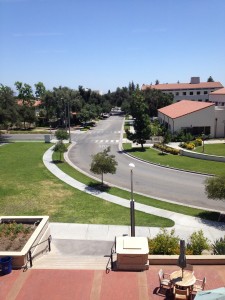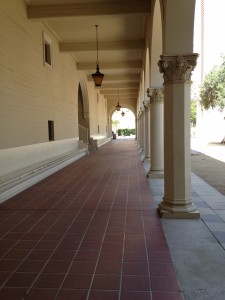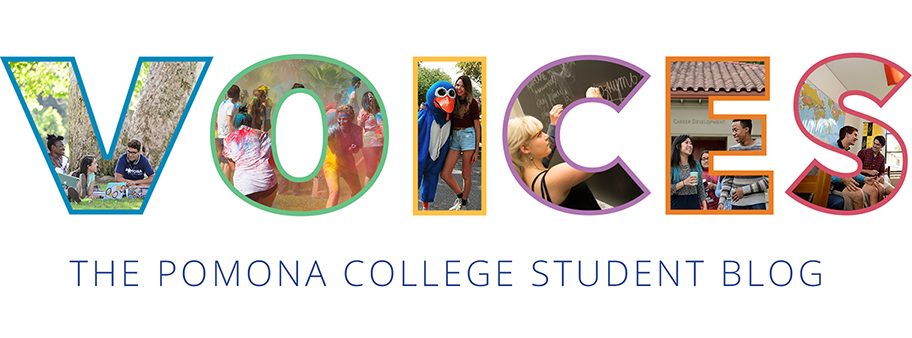Observations from a research-drained observer: the lawn of Walker beach lacks sunbathers; the residence hall windows, usually framing hard-at-work or hard-at-play students, stare back vacantly; and the streets and sidewalks and hallways all sit in a campus-wide barrenness. This is the effect summer has on Pomona – emptiness; an emptiness that reaches from the corners of Wig to the steps of Frary, from the grass of the soccer field all the way up to the tip of the Smith clock tower. The bustle of footsteps – and, trust me, the average Pomona kid does not move, but bustles, either to class or away from it – is missing and the insistent scraping of longboards, skateboards, bikes, and, yes, even unicycles is gone.

The pulse of Sagehen athletics has, for the time being, halted. The football field begs for its surface to be torn up, as does the track. The dust of the baseball diamond doesn’t want to settle, and the pools recline in awkward silence. No splashing. No music. No chatter about a future, too-good-to-be-false SCIAC victory. Then, of course, there is Bonita Avenue; it is perhaps the loneliest place left on campus. Its freshman occupants have waved farewell, some moving on – and up – to better and bigger things on north campus. However, it is not just lonely. It is restless. Impatient. It is eager to fulfill its duty, to greet and house the incoming class, to fill its every last inch with first-year introductions, sponsor group quote-boards, and Salvador Dali, look-I’m-artsy posters. It, like most areas of the campus, is ready for the emptiness to end.
For now, though, everything must wait. There is no dining in the dining halls. There is no residing in the residence halls. Well, the latter statement is not entirely true – although, I am not one to pass up a chance at parallelism just for honesty’s sake. Students, faculty, staff, they are here, albeit in almost imperceptible numbers. Interns live on campus and commute. High-school programs flow in-and-out.
Professors check in on their SURP (Summer Undergraduate Research Program) protégés, me included. While SURPs are mainly awarded to adherents of hard science, some science of the softer variety is also recognized, even science as soft as literature – so soft, in fact, that this is the science I will be laying my head upon. Over the summer, I will be researching Afrofuturist fiction, art, and media praxis with professor Valorie Thomas, whom I cannot praise highly enough. What is Afrofuturism, you ask? Put simply, and simplicity is never a scholar’s friend, it is this: a field of intellectual, artistic, and cultural production that (re)purposes the apparatus of science fiction in order to explore contemporary race issues. Interesting, right? SURP projects are typically compelling in this way. In fact, they have to be, you spend 10 weeks of your precious summer toiling away at them.

Tucked away in the recesses of the library, I have become particularly attuned to this emptiness of the campus. Compared to the wall-to-wall, suffocating, hyper-stressful library population circa finals week, this is tranquility, and it is a tranquility that offers itself up for reflection. By this, I mean that I am not bemoaning Pomona’s emptiness. In truth, I am reveling in it, examining it, taking advantage of it. In my shoe-gazer musings, two conclusions have been drawn: one, the emptiness of the campus points, seemingly in contradiction, to its fullness, that is, the vibrancy and beauty and verdancy of the space that we too-preoccupied-with-an-overload-of-activities Pomona kids typically overlook can be better seen, and two, this emptiness reveals and underscores how much I – and, I’m sure, my peers – long for our overload of activities to resume. For, while overloaded, activity means we are back in our home-away-from-home, back with our friends, back in the classroom where we feel, in the heat of discussion or the frenzy of discovery, that we are growing, not just as students but as individuals.
The other day, my friend called the campus during summer a ghost town. This is apt. Ghosts do line the walkways of Pomona now. They nap on the Quad. They doze off at their desks. They dance in Edmonds Ballroom. These ghosts are memories – they haunt not to disturb or torment, but to keep the vitality of the college alive. These are the ghosts we will encounter, say, 30 years from now as we remember the good times and the bad times on campus. These aren’t ghosts to be scared of; these are ghosts to be cherished.
